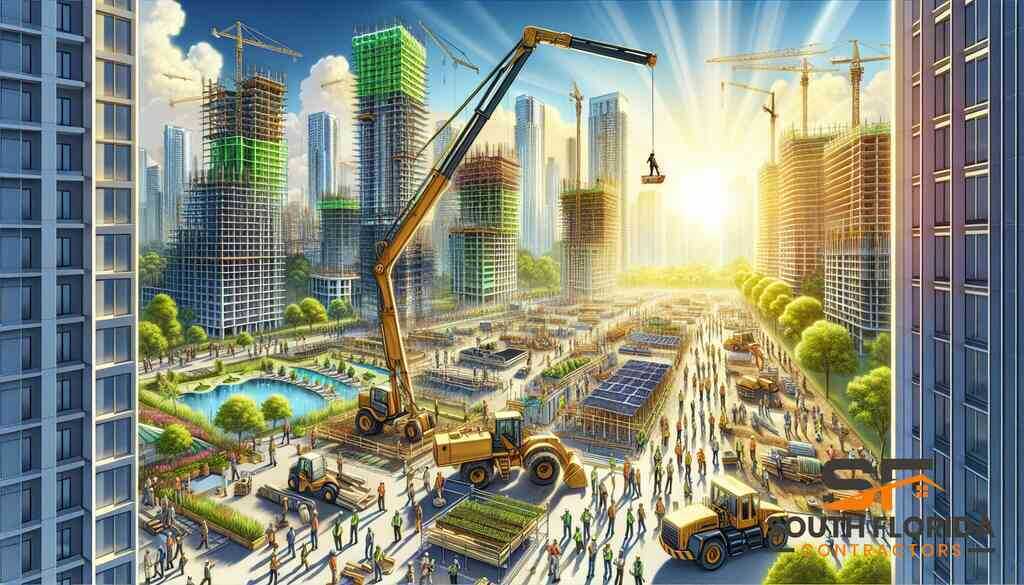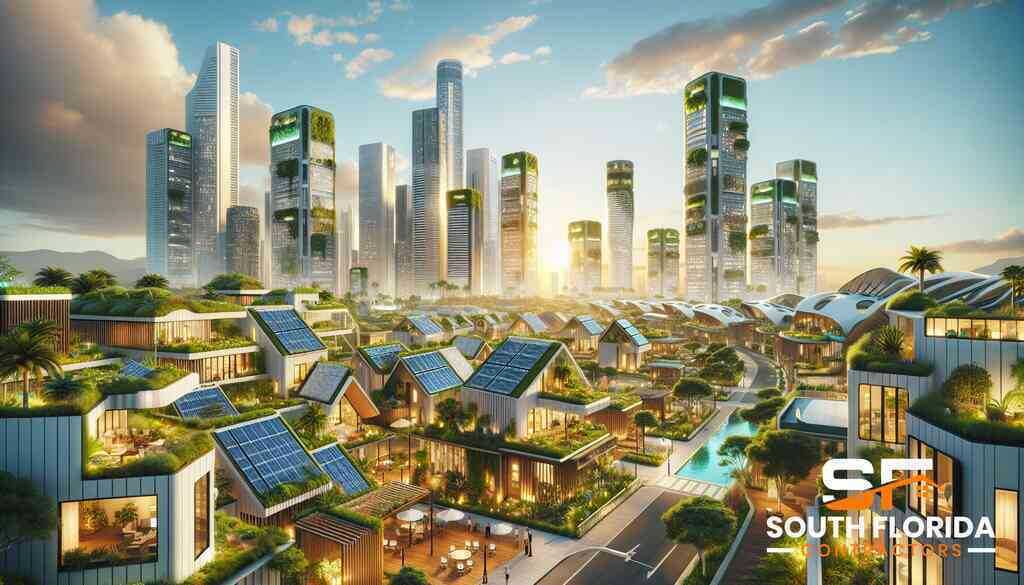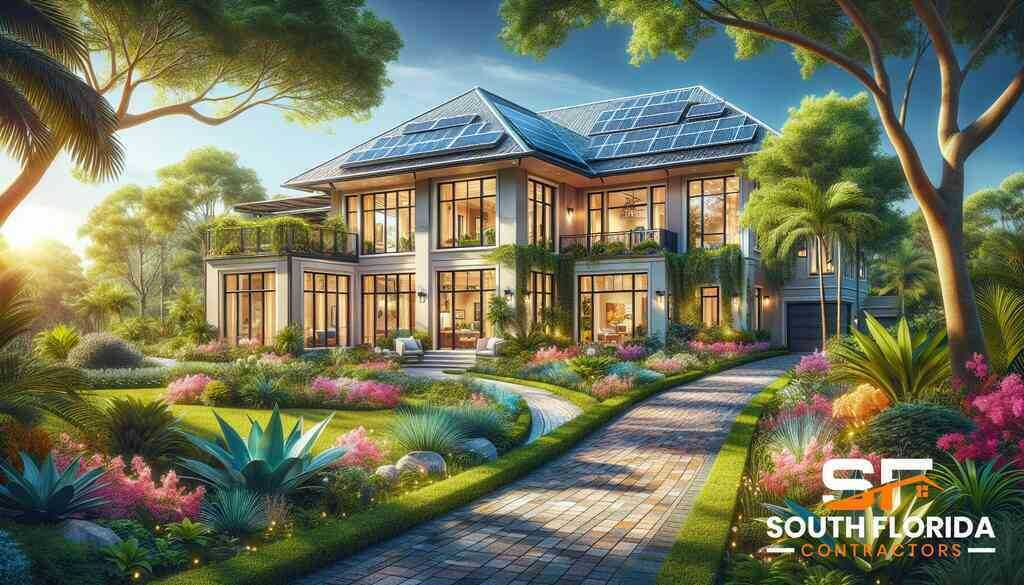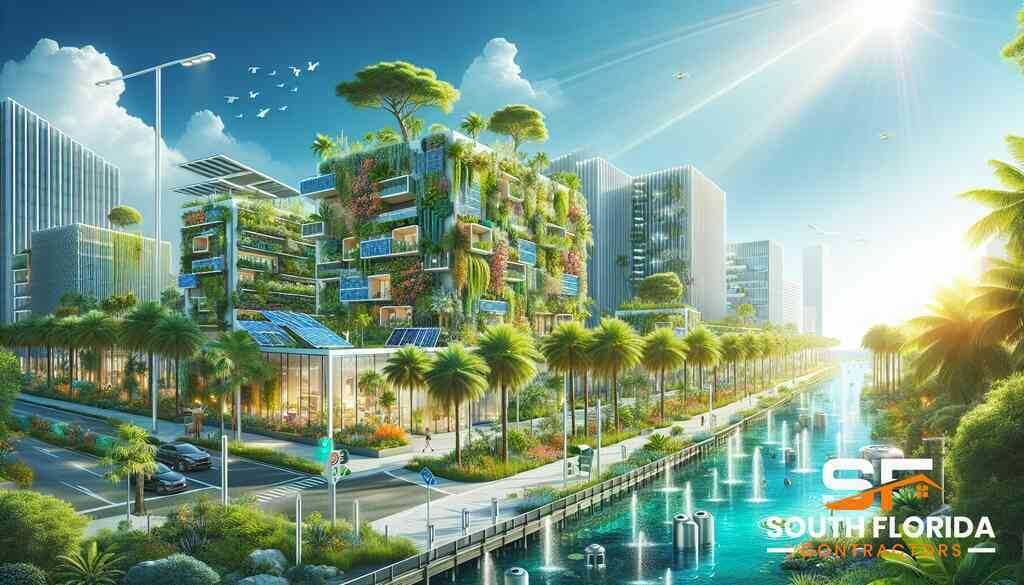
How Do South Florida Experts Pioneer Eco-Friendly Designs
October 6, 2025
Introduction to Eco-Friendly Innovations
Understanding the Eco-Friendly Revolution in Construction
The construction industry is undergoing a transformative shift towards sustainability, led by a rising demand for eco-friendly construction practices. This revolution is fueled by growing environmental awareness, technological advancement, and legislative mandates aimed at reducing carbon footprints. Industry pioneers are spearheading efforts to blend traditional craftsmanship with modern, sustainable techniques, fostering an era of green architecture that South Florida can be proud of. Across the United States, there is a burgeoning interest in renewable materials and energy-efficient methods. This interest aligns perfectly with the increasing focus on renewable construction materials and technologies that aim to render homes more sustainable.
Why South Florida Leads in Sustainable Design
South Florida has become a beacon for sustainable design, setting standards in the realm of environmentally responsible construction. The region’s unique climate conditions necessitate innovative approaches that utilize climate-responsive designs in Florida. Architects and engineers are leveraging advanced techniques, like passive solar design, to capitalize on the natural sunlight and reduce reliance on non-renewable energy sources. Furthermore, South Florida’s commitment to sustainable urban planning underscores its role as a leader in eco-oriented building solutions. This trend not only enhances quality of life but also aligns with the global push towards zero-energy buildings in South Florida.
Comprehensive Overview of Green Architecture in South Florida
The evolution of green architecture in South Florida is characterized by a blend of creativity and practicality. Local professionals are integrating biophilic design in architecture with an aim to connect inhabitants with nature while ensuring building efficiency. These designs herald a future where built environments harmonize with natural settings, enhancing both aesthetic appeal and ecological function. The region’s embrace of eco-friendly buildings in South Florida is supported by policies that promote sustainable urban planning near Boca Raton, fostering communities that are both livable and resilient. As these green innovations continue to evolve, South Florida remains at the forefront of pioneering environmentally conscious design solutions.
Harnessing Nature: Natural Elements in Design
Integrating Biophilic Design for Sustainable Living Spaces
Biophilic design is a cornerstone for creating sustainable living environments that make a noticeable difference in eco-friendly construction strategies. By bridging the indoors with natural elements, designers foster atmospheres that enhance well-being and boost energy efficiency. Architects implement features like vertical gardens and natural lighting to create spaces that seamlessly merge with South Florida’s vibrant landscapes. This integration aligns with eco-friendly construction material practices, reinforcing environmental sustainability. As South Florida continues to innovate, biophilic design serves as a testament to the region’s adaptation to eco-conscious trends.
In the sphere of home renovations, local contractors stand out by utilizing biophilic strategies that resonate with modern eco-friendly home designs. The drive towards biophilic architecture underscores broader trends aimed at reducing a building’s carbon footprint while beautifying spaces through nature-inspired motifs. These practices not only appeal to environmentally conscious clients but also contribute to healthier living environments.
The Role of Passive Solar Design in South Florida Homes
Passive solar design underpins the shift towards energy-efficient homes, offering a pragmatic approach to decreasing energy expenditure. By harnessing sunlight and thermal energy, South Florida homes can reduce reliance on artificial heating and cooling systems, paving the way for solar-powered homes. Expert contractors focus on optimizing site orientation, window placement, and thermal mass to capture and distribute solar energy efficiently.
This technique is particularly effective in Florida’s sun-drenched climate, where strategic design can mean the difference between excessive energy usage and sustainable living. Facilitating natural energy flows through architectural design, passive solar integration remains a vital aspect of South Florida’s green innovations. It ensures that residents enjoy comfort year-round while simultaneously minimizing environmental impact.
Water Conservation Techniques: Beyond the Basics
Beyond aesthetics, eco-friendly designs in South Florida are pushing the boundaries with advanced water conservation strategies. These strategies extend past traditional low-flow fixtures to include rainwater harvesting systems, greywater recycling, and the installation of xeriscapes, which prioritize native plant species that require less water.
Incorporating water conservation into construction and remodeling projects reflects an effort to manage local water resources effectively, addressing both cost and ecological impact. This approach not only supports sustainability goals but also anticipates future challenges associated with water scarcity. By embedding such forward-thinking techniques, contractors ensure that developments are robust, adaptive, and aligned with the principles of resilient construction techniques, making them a key part of the eco-friendly evolution across South Florida.
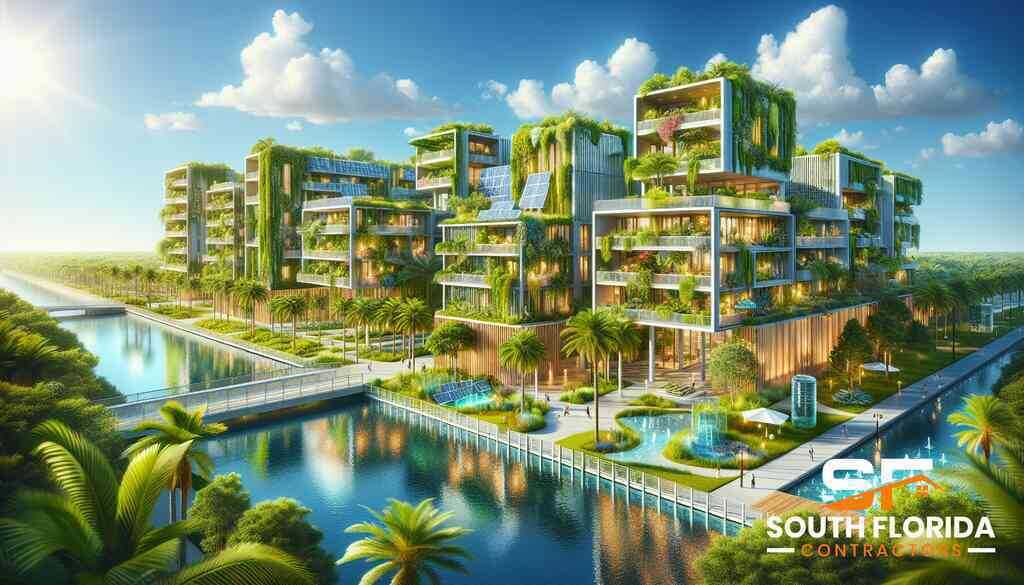
Material World: Sustainable Choices
Exploring Renewable Construction Materials
South Florida contractors are at the forefront of integrating renewable construction materials into modern building strategies. By focusing on materials that are both durable and environmentally friendly, experts are transforming the construction landscape. From bamboo and reclaimed wood to recycled metal and glass, builders are emphasizing the importance of sustainable resource management. At the heart of these innovations lies a commitment to reducing the overall carbon footprint. Embracing these materials not only enhances the aesthetic appeal of structures but also ensures they stand resilient against local climatic conditions. By choosing such sustainable materials, contractors are paving the way for a greener, more sustainable future.
The Impact of Recycled Materials in Urban Planning
Recycled materials are playing an increasingly significant role in urban planning across South Florida. Contractors are creatively reimagining waste as an asset, tapping into an ever-expanding range of recycled options for construction purposes. By incorporating recycled plastic, aluminum, and concrete into their projects, developers are not only reducing landfill waste but also cutting costs without compromising on quality. These materials are particularly popular in large-scale projects where sustainability goals are paramount. As urban planning continues to evolve, the focus on recycled materials demonstrates a profound shift towards more sustainable, responsible building practices that prioritize both ecological and economic viability.
Innovative Use of Renewable Resources in Building
The use of renewable resources is revolutionizing the way homes and commercial structures are built in South Florida. Innovative techniques are emerging, allowing contractors to harness resources like solar power and geothermal energy effectively. This shift is particularly evident in the increased adoption of renewable energy in home construction practices, which integrate solar panels and energy-efficient technologies into building designs. Such integration not only helps in reducing dependency on non-renewable power sources but also aligns with broader goals of achieving zero-energy buildings. Embracing renewable resources facilitates a dual benefit of enhancing energy efficiency and promoting environmental stewardship throughout the construction process in South Florida.
Technological Advancements: Modernizing Eco-Friendly Solutions
Incorporating Integrated Green Technology
In South Florida, the incorporation of integrated green technology is transforming how we approach eco-friendly construction. By embedding advanced systems into building designs, contractors are driving efficiency and sustainability hand in hand. Smart thermostats, LED lighting systems, and automated energy management are revolutionizing the way structures consume resources. Moreover, the integration of such technology not only reduces environmental impact but also lowers operational costs for homeowners. This shift towards smart, green solutions is an essential component of the region’s commitment to environmentally responsible construction. In essence, these tech-forward strategies serve as a benchmark for modern building practices and highlight South Florida’s role as a frontrunner in adopting future-oriented solutions.
Energy-Efficient Homes and Renewable Energy Integration
The construction of energy-efficient homes has become a hallmark of sustainable building practices in South Florida. These homes utilize cutting-edge methods to minimize energy consumption while maximizing comfort and efficiency. By integrating renewable energy in home construction, builders are tapping into resources like solar and geothermal energy to power residential projects effectively. This approach not only lowers utility bills but also advances regional goals for reduced carbon emissions. The adoption of energy-efficient technologies, such as solar panels and high-performance insulation, plays a crucial role in promoting eco-conscious designs. As the demand for green homes rises, builders continue to refine their strategies, ensuring homes are both eco-friendly and future-proof in a world increasingly focused on sustainability.
Achieving LEED Certification: A Step-by-Step Guide
Gaining LEED certification marks a significant achievement in the pursuit of sustainable building excellence across South Florida. This distinction showcases a building’s commitment to eco-friendly standards and practices, acting as a benchmark for environmentally responsible construction. The certification process involves several essential steps, including planning, design, and the implementation of green features. Successful achievement of LEED status requires adherence to criteria that evaluate energy efficiency, water savings, and overall environmental impact. Contractors and developers aiming for this certification must focus on constructing structures that surpass traditional methods, embracing innovations that enhance sustainability and efficiency. Achieving such certification not only affirms a building’s environmental credentials but also positions it as a forward-thinking model within both the local community and the broader industry.
Planning for the Future: Resilient and Adaptable Designs
Climate-Responsive Designs for South Florida
In South Florida, climate-responsive designs are not just a trend but a necessity, ensuring structures withstand extreme weather conditions while maintaining sustainability. Architects and engineers in the region embrace design elements that adapt to the local climate, such as elevated foundations and wind-resistant features. By integrating these elements, South Florida is setting benchmarks in climate adaptability for resilient architecture, offering a blueprint for similar coastal regions to follow. Beyond construction, the incorporation of natural ventilation and shading devices assists in moderating indoor temperatures, further promoting eco-friendly construction practices. These strategies are not only crucial for durability but also enhance energy efficiency, aligning with broader efforts to foster sustainable living environments.
Zero-Energy Buildings: The Ultimate Goal
The pursuit of zero-energy buildings is gaining momentum among South Florida contractors, reflecting a commitment to reducing the carbon footprint of urban landscapes. These buildings are designed to produce as much energy as they consume, primarily through renewable resources like solar panels and advanced insulation techniques. Integrating technologies such as renewable energy in home construction is pivotal, offering an eco-friendly solution that delivers both environmental and economic benefits. By focusing on energy efficiency and resource utilization, zero-energy buildings exemplify the innovative spirit driving South Florida towards a sustainable future. As these constructions become more prevalent, they not only support global sustainability goals but also position South Florida as a leader in eco-conscious building practices.
Sustainable Urban Planning and Low-Impact Development
Sustainable urban planning is at the core of South Florida’s construction strategies, promoting low-impact development that minimizes ecological disruption. By emphasizing green corridors and permeable surfaces, this planning approach reduces stormwater runoff and enhances biodiversity. South Florida’s commitment to sustainable cityscapes manifests in projects that prioritize both environmental health and quality of life. Through comprehensive urban planning, regions like Boca Raton are witnessing a resurgence in custom home designs that harmonize with natural landscapes. In addition to aesthetic improvements, such planning encourages the use of resilient construction techniques, ensuring that urban growth is both mindful and forward-thinking. As cities continue to expand, sustainable urban planning remains essential, guiding development towards a more balanced relationship with the environment. For more insights into how South Florida leads eco-conscious building initiatives, discover eco-oriented building solutions.
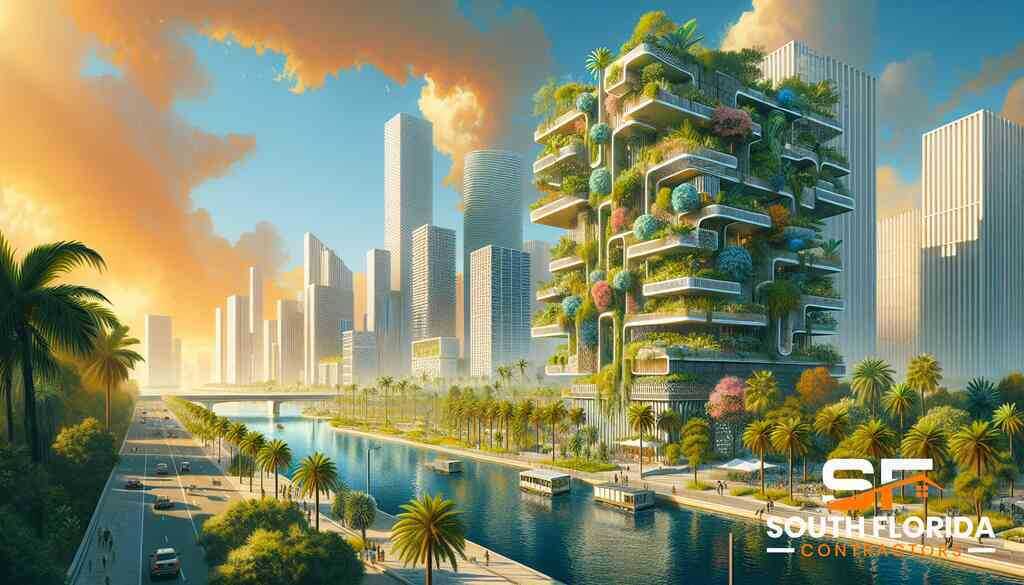
Conclusion: The Path Ahead for Eco-Friendly Designs
The Future of Eco-Conscious Building in South Florida
Eco-friendly buildings in South Florida are poised to become an integral part of the region’s architectural identity. As awareness of environmental impacts grows, the shift towards sustainable building practices will likely accelerate. Local contractors and builders are already setting benchmarks by adopting environmentally responsible construction techniques that merge functionality with aesthetics. The emphasis on sustainability will continue to influence construction trends, as homeowners increasingly seek residences that are both energy-efficient and stylish.
South Florida’s leadership in sustainable design highlights its commitment to crafting buildings that conserve resources and minimize ecological footprints. Efforts in urban planning, like those seen in innovative designs in Palm Beach, showcase how early adoption of green technologies sparks broader transformations within the construction industry. These changes not only align with global objectives for reduced carbon emissions but also offer economic benefits by lowering long-term operational costs, making eco-friendly structures an attractive choice for investors and residents alike.
Embracing Innovative Green Construction Techniques
Green construction techniques are vital as South Florida continues to pioneer eco-friendly designs. These practices integrate modern technologies with building processes to achieve unparalleled efficiency and sustainability. One remarkable method gaining traction is the use of renewable construction materials, which South Florida experts are leveraging to enhance both the environmental and structural integrity of projects. Such innovations not only make construction more sustainable but also adapt to the fluctuating climate challenges faced by the region.
Adoption of resilient construction techniques, as explored in resilient construction techniques, is critical for maintaining structural durability in challenging weather. Contractors incorporate advanced materials and designs tailored to withstand hurricanes and flooding, ensuring that modern buildings are fortified against nature’s unpredictability. As cutting-edge technology evolves, the potential for smarter, more sustainable living spaces will expand, reinforcing South Florida’s status as a hub for eco-conscious innovation in construction.
Frequently Asked Questions
Question: How are South Florida contractors incorporating renewable materials into modern building designs?
Answer: South Florida contractors are at the forefront of using renewable materials in construction, which include bamboo, reclaimed wood, recycled metal, and glass. These materials are both durable and eco-friendly, paving the way for sustainable building practices. By focusing on renewable resources, contractors are reducing the overall carbon footprint and ensuring resilience against local climatic conditions. The use of these materials not only enhances the aesthetic appeal of structures but also contributes to broader goals of environmentally responsible construction.
Question: What eco-friendly construction techniques do South Florida experts emphasize for sustainable home renovations?
Answer: Experts in South Florida emphasize biophilic design and passive solar techniques to create sustainable living spaces. By integrating natural elements like vertical gardens and optimizing site orientation and window placement, they ensure that homes are energy-efficient and harmonious with the environment. These methods reduce reliance on non-renewable energy sources, thus aligning with eco-friendly home designs that are both energy-efficient and aesthetically pleasing. South Florida Contractors utilize these strategies to deliver sustainable home renovations that cater to environmentally conscious clients.
Question: Can you explain how climate-responsive designs enhance resilience in South Florida’s eco-friendly architecture?
Answer: Climate-responsive designs are essential in South Florida, where weather conditions necessitate robust architectural solutions. These designs incorporate elevated foundations, wind-resistant features, and natural ventilation to enhance durability and sustainability. By focusing on resilient construction techniques, South Florida Contractors ensure that buildings withstand environmental challenges while promoting energy efficiency. Such strategies are not only crucial for structural integrity but also contribute significantly to eco-conscious designs that are adaptive to the local climate.
Question: How do South Florida experts pioneer eco-friendly designs through technological advancements in construction?
Answer: South Florida experts pioneer eco-friendly designs by integrating advanced green technologies like smart thermostats, LED lighting, and automated energy management systems into constructions. These technologies optimize resource usage, enhance efficiency, and reduce operational costs. By including these smart solutions, contractors ensure that buildings meet eco-conscious standards and are prepared for future sustainability challenges. This technological integration positions South Florida as a leader in modernizing eco-friendly solutions in the construction industry.
